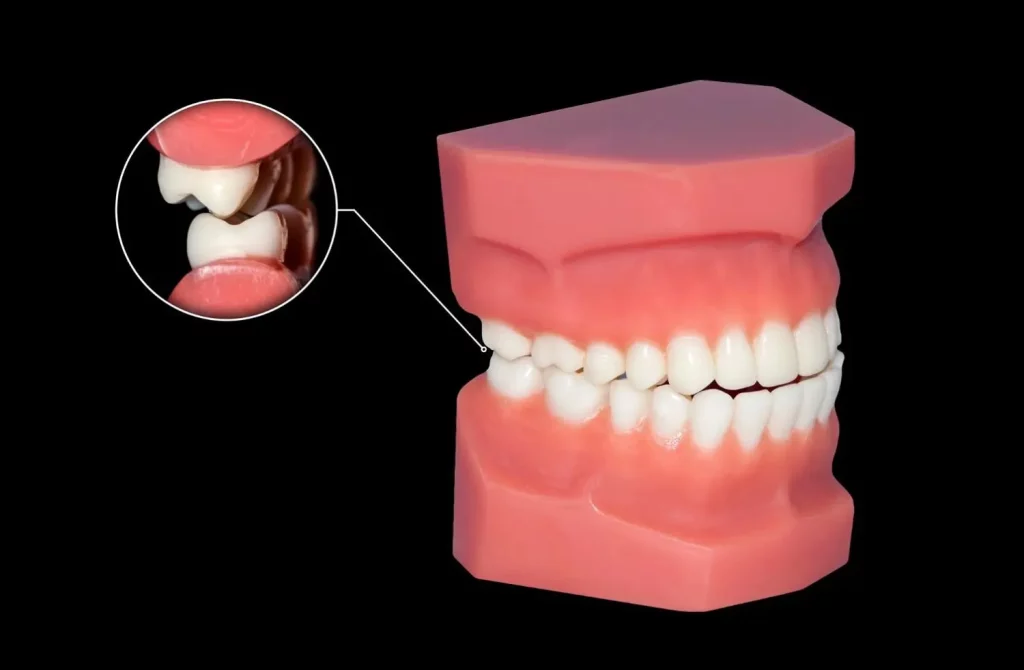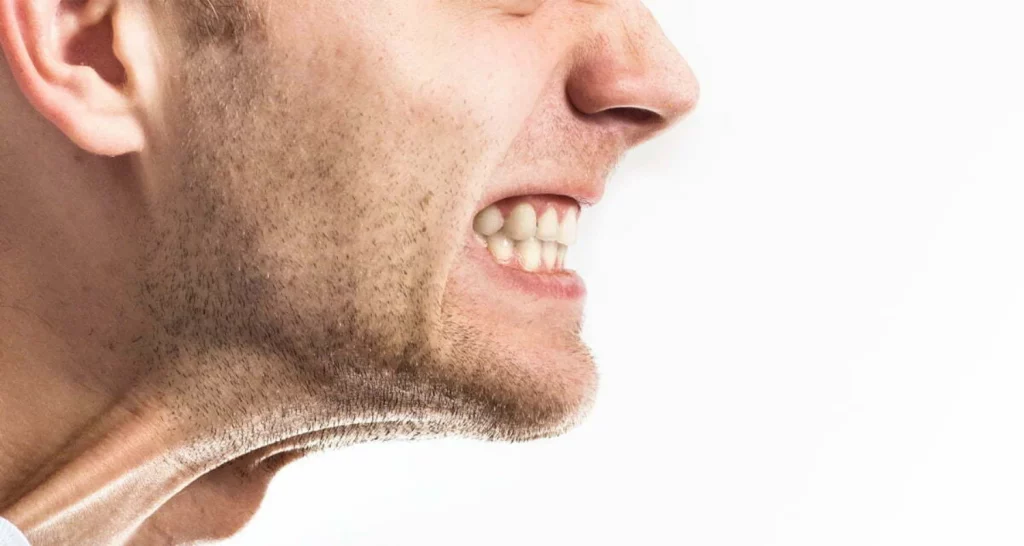Last Updated on: 5th December 2024, 09:43 am
According to the WHO, epilepsy is a chronic, non-communicable brain disease that affects some 5 million people across the world. It is also known that epilepsy and teeth grinding have a direct correlation because of the brief episodes of involuntary movement (convulsions) that affect the whole body or part of the body, including the mouth. Sometimes it is accompanied by loss of consciousness and control of bowel function or sphincter control.
It is important to clarify that having a seizure does not mean having epilepsy. It is said that 10% of people in the world may experience a seizure episode throughout their lives not associated with a diagnosis of epilepsy. The disease is defined by two or more episodes of unprovoked seizures.
There is no apparent cause for the onset of epilepsy; however, the presence of tumors, strokes, or even a genetic predisposition could predict its onset. It is not a degenerative disease, as it can be controlled with drug treatment.
What is bruxism (teeth grinding)?
Bruxism is a condition characterized by grinding, clenching, or crunching the teeth when awake or asleep. In awake people it is easier to detect; however, bruxism during sleep is the most studied. The condition can occur in both children and adults.
Mild cases generally do not require treatment, but in more serious cases it may be required as it can cause damage to the teeth, engender pain or fatigue in the jaw, and headaches.
What are the causes of bruxism?
Although the cause of bruxism is unknown, several factors can help trigger it:
-
- Psychological factors such as stress, mood, anguish, nervousness, and sadness
- Genetic factor
- Respiratory infections
- Consumption of alcohol or caffeine
- Smoking habit
Some medications such as antidepressants, medications to control seizures, and medications to treat hyperactivity and attention deficit.
What is the connection between epilepsy and teeth grinding?
Neurologists from Vithas Nisa hospitals have warned that sleep disorders in children, such as insomnia, sleepwalking, night terrors, bruxism, and rhythmic movements may be linked to epileptic seizures that make it difficult for them to rest.
Children with epilepsy can also suffer from parasomnias, episodic phenomena of various kinds that usually appear in the first part of the night and during the non-REM sleep phase. Parasomnias disturb night rest and are more frequent in children, although they can persist into adulthood, in which they gain a greater pathological significance.

Among the most common parasomnias is nocturnal bruxism, an involuntary habit that causes some children, preferably during adolescence, to clench their jaws strongly or grind their teeth during sleep, rubbing or sliding them, without any functional objective.
Seizures caused by temporal lobe epilepsy present with orofacial movement disorders and oral stereotyped movements that are similar to bruxism.
How is bruxism treated?
There are different treatments for bruxism and its consequences. It requires a multidisciplinary approach, both dental and medical. From dentistry, treatment is aimed at reducing pain and preventing wear and fracture of the teeth. Other possible treatments are:
-
- Behavior change: Being aware of the disorder helps both in diagnosis and treatment while changing the position of the mouth and jaw when sleeping helps to avoid bruxism.
- Stress management: Reducing responses related to stress can prevent or reduce bruxism.
- Dental treatment: Repair of the teeth that have been fractured or worn, in some cases rehabilitation with crowns or dentures, is required.
- Mouth guards: The use of covers, plates, splints, or mouth guards prevents damage from rubbing caused by grinding teeth. It also helps to reduce the muscle pain caused by bruxism.
Discharge splint for bruxism
Most dentists recommend using a dental splint at night to protect teeth. This mouthguard creates a disocclusion between the upper and lower jaw, preventing contact with each other. The dental splint also absorbs some of the pressure exerted by clenching. An added benefit is reduced squealing sound at night, which is a huge relief for the patient’s partner. The teeth are completely covered by the dental splint, so there is no contact between the upper and lower teeth.

It is necessary to clarify that a dental splint in itself is not the cure for this condition, no matter the causes of bruxism. Its purpose is to protect and prevent dental wear while allowing the jaw and muscles to relax as the pressure is reduced and the jaw eases a bit.
The bruxism relief plate has two important characteristics:
-
- It has to be made of hard acrylic and never of a soft material.
- It has to be made to measure for each patient since a poorly made or adjusted “relief plate” can cause significant damage to the temporomandibular joint.
What other measures can be taken?
-
- Visit the dentist regularly, at least twice a year. Frequent examinations will give the dentist sufficient tools to detect and treat bruxism in time.
- Performing relaxing activities, such as yoga or meditation helps to reduce stress, play sports, or do some physical activity.
- Avoid caffeine and alcohol as they can overstimulate the nervous system.
- Eat a healthy diet, and avoid hard foods.
- Create awareness of bruxism by setting reminders to separate teeth.
- Maintain good sleeping habits. Getting a good night’s sleep helps prevent episodes of stress and anxiety.
Whatever the cause of bruxism, it is important that it is diagnosed early as if left untreated, it can lead to more serious problems with one’s dental health.
Contact us
If you have any questions about this or other topics, you can contact us at Channel Islands Family Dental as well as our page on Facebook. We look forward to your visit and we will make a timely diagnosis. Our dentists in Oxnard, Santa Paula, Ventura, Newbury Park, and Port Hueneme will be able to guide you toward the best treatment to take care of your health and give you back your best smile.
Bibliography
- Antonio Enriquez Squeda, *. J. (October 01, 2014).ADM Magazine. Obtenido de Inter-disciplinary assessment and management of bruxism.: https://www.medigraphic.com/pdfs/adm/od-2015/od152h.pdf
- Bismar Hernández Reyes, S. M. (January 1, 2017). Camagüey Medical Archive Magazine. Retrieved from Bruxism: a current panoramic.
- National Institute of Dental and Craniofacial Investigation. (July 1, 2022).National Institute of Dental and Craniofacial Research. Obtained from Bruxism: https://www.nidcr.nih.gov/espanol/temas-de-salud/el-bruxismo
- John Fernando Oyarzo, CV (September 01, 2021).Las Condes Clinic Medical Journal. Obtained from Etiology, diagnosis and management of sleep bruxism: https://www.elsevier.es/es-revista-revista-medica-clinica-las-condes-202-articulo-etiologia-diagnostico-manejo-bruxismo-sueno- S0716864021000882
- Monica Firmani, M.R. (October 1, 2015).Chilean journal of pediatrics. Obtenido de Sleep bruxism in children and adolescents: https://www.scielo.cl/scielo.php?pid=s0370-41062015000500012&script=sci_arttext
- World Health Organization. (February 9, 2022).World Health Organization. Retrieved from Epilepsy: https://www.who.int/es/news-room/fact-sheets/detail/epilepsy
- Patricia Judith Pinos Robalino, E.M. (January 31, 2020).Knowledge and knowledge research company. Obtenido de Bruxism, Current Knowledge. A Review of the Literature.



